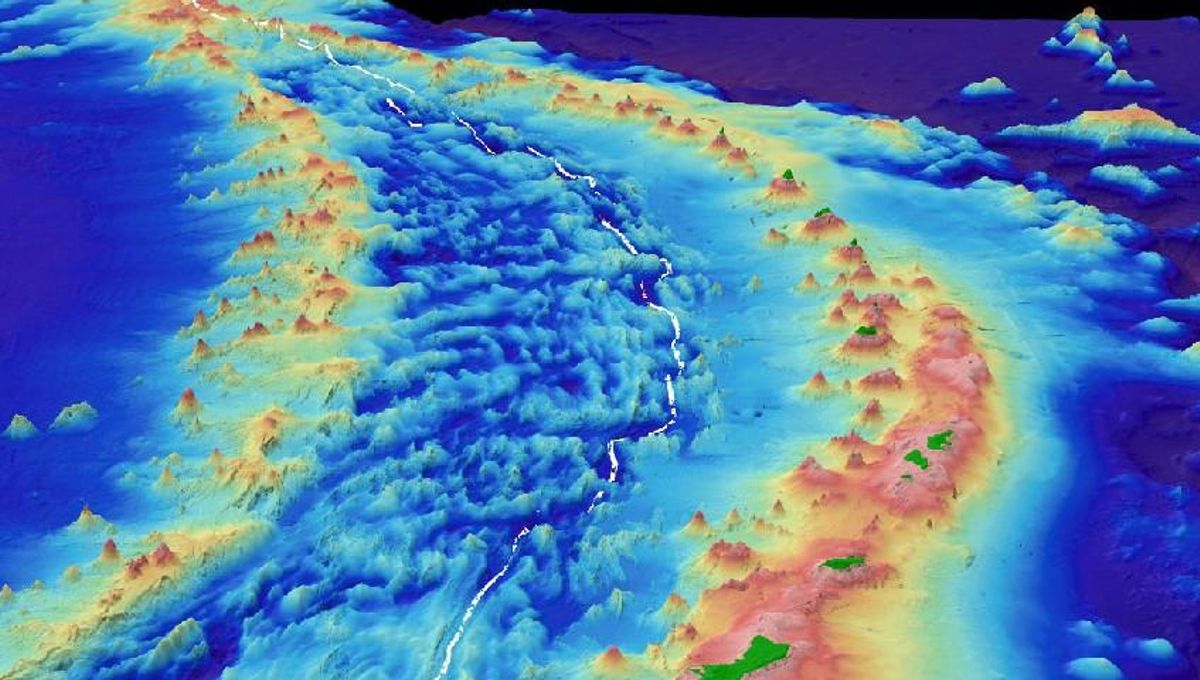
Thousands of never-before-seen microbe species have been found in the deepest point of the world’s oceans, the Mariana Trench. These strange microorganisms are like nothing we see on the surface, perfectly adapted to life regularly subjected to the extremely high pressure, cold, and lack of nutrients found beneath kilometers of ocean water.
ADVERTISEMENT
In 2021, Chinese scientists boarded a deep-sea sub, Fendouzhe, and ventured to the depths of the Mariana Trench in the western Pacific Ocean. Over 33 dives, they collected thousands of sediment, seawater, and larger organism samples from depths of 6,000 to 10,900 meters (19,685 to 35,761 feet).
The team has now reported their findings, providing the first-ever systematic view of the ecosystem in the hadal zone. Their work identified over 7,000 microbe species, nearly 90 percent of which had never been documented before.
It wasn’t all microscopic organisms, either. The researchers invited 662 hadal amphipod (Hirondellea gigas), a tiny crustacean that moves side to side between deep-sea trenches, showing how invertebrates travel across the ocean floor. There was also the hadal snailfish (Pseudoliparis swirei), which holds the record as the deepest-living fish ever found. By comparing it to other deep-sea fish, researchers discovered it has adapted to push downward into the crushing depths where few other fish can survive.
Genetic analysis of the microbes provided some fascinating clues as to how they survive in such extreme conditions.
Some microbes have smaller, more efficient genomes that help them specialize and thrive under extreme pressure. This was seen in microbes dominant at the bottom of the Mariana Trench, which is similar to previously studied deep-sea bacteria. Conversely, other microbes have larger, more flexible genomes that allow them to survive by adapting to changing conditions.
ADVERTISEMENT
In an accompanying editorial, the team explains how the unusual genes they discovered among the deep sea microbes could be used in efforts to help save threatened biodiversity elsewhere on the planet.
“The extraordinarily high novelty and diversity of hadal microorganisms indicate resource potentials of novel genes, structures, and functions, which may be alternative choices to alleviate the current depletion of terrestrial biological resources,” the study authors write.
It’s indescribably incredible that scientists can travel to this part of planet Earth and study it with such precision. The deepest point of the Mariana Trench, known as Challenger Deep, reaches a depth of 10,984 meters (36,037 feet). This oceanic trench was created by a dramatic geological process called subduction—where one massive slab of Earth’s crust (the Pacific Plate) slid under a smaller one (the Mariana Plate). This collision forced the seafloor to plunge downward, forming the deepest part of the ocean
Don Walsh and Jacques Piccard were the first two people to reach Challenger Deep in 1960 and, to date, just 22 humans have been here, including the trio of Chinese researchers involved in this latest study.
ADVERTISEMENT
The study is published in the journal Cell.
Source Link: In Earth's Deepest Ocean Trench, Over 7,000 New Species Have Been Discovered